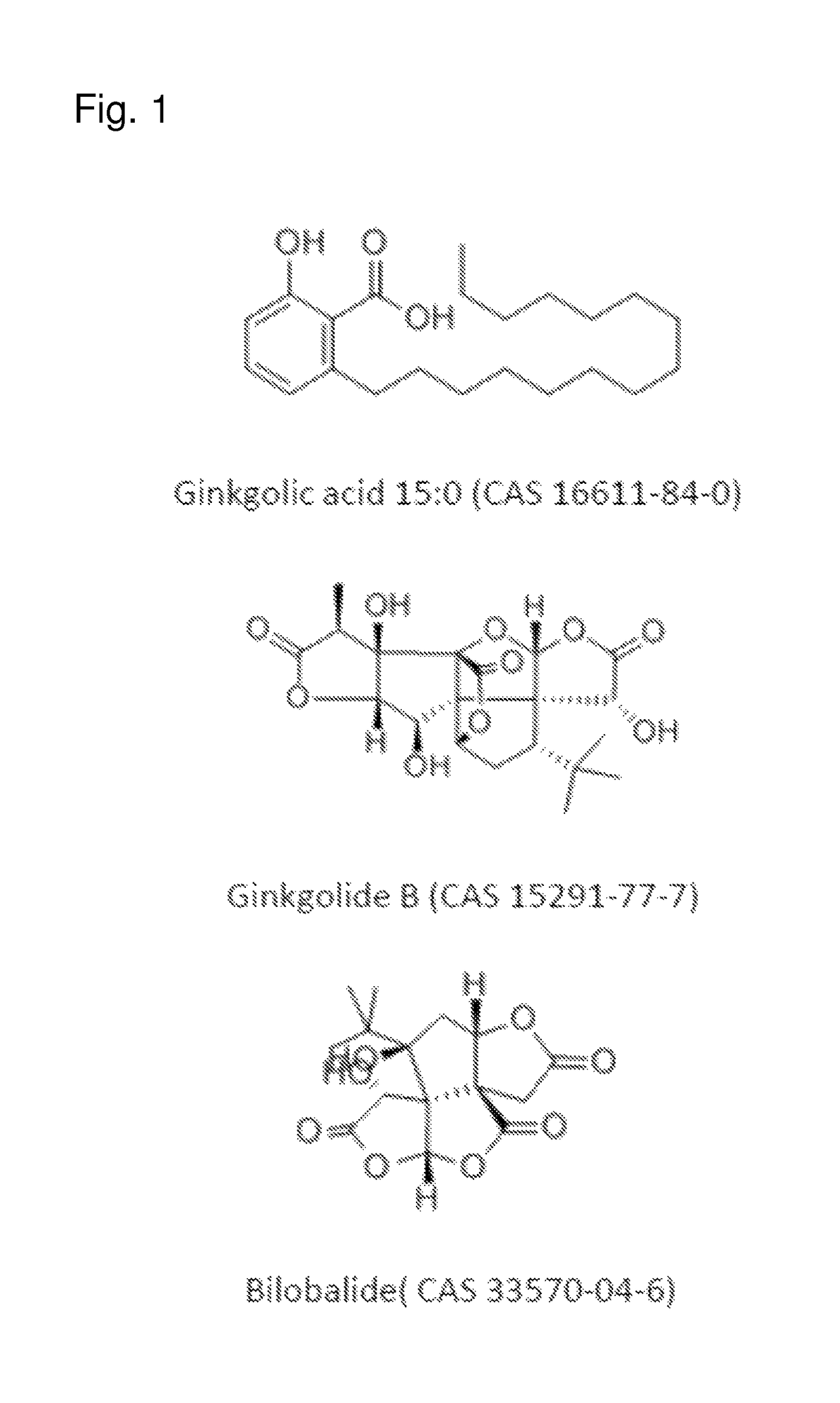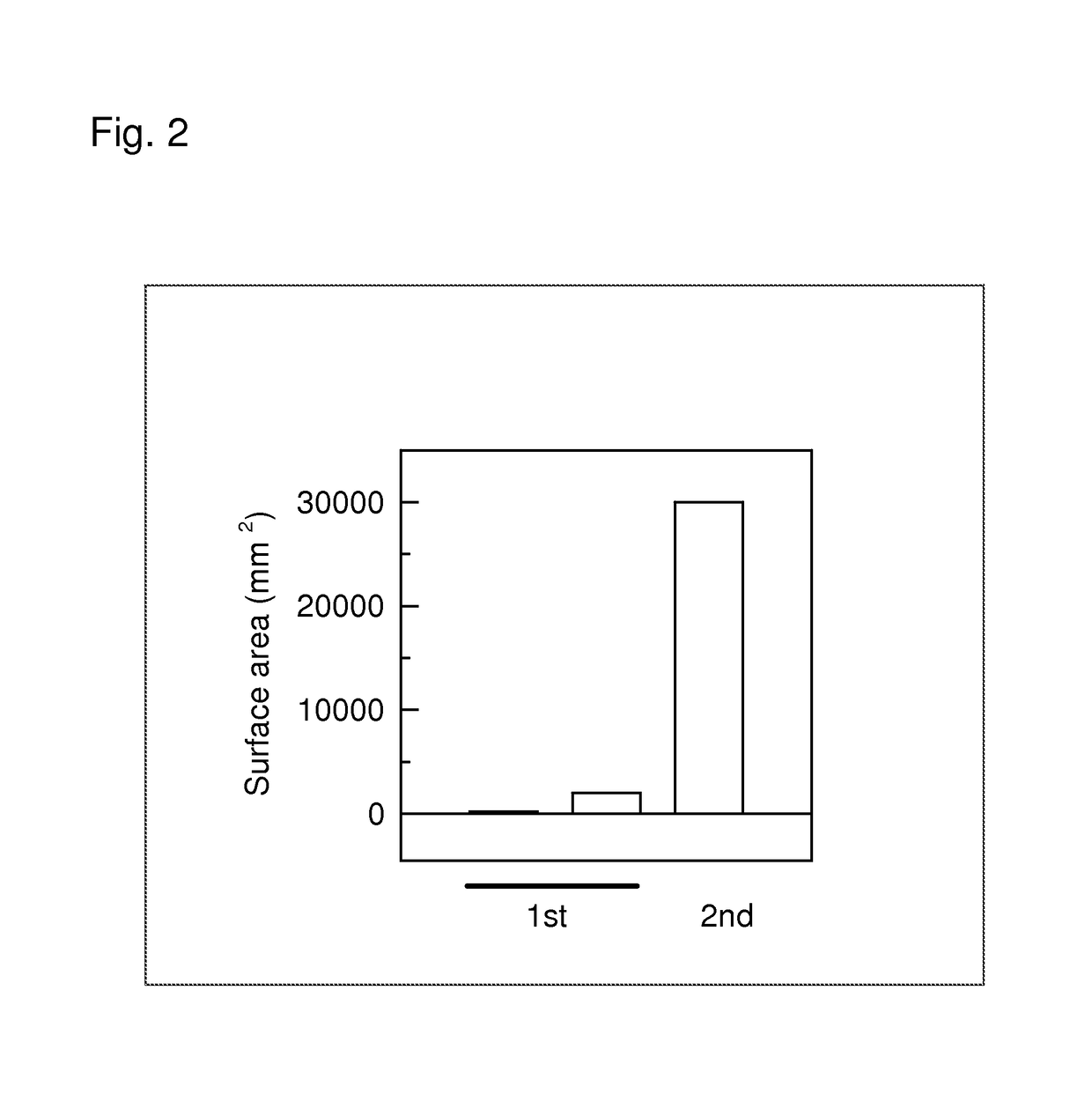Ginkgo derived compositions and their use to prevent fruit infestation by codling moth
a technology of codling moth and composition, which is applied in the field of preventing and treating insect infestation in plants, can solve the problems of affecting the growth of apples, the inability of growers to control this insect in a limited way, and the need for excessive application of insecticides, so as to prevent apple infestation
- Summary
- Abstract
- Description
- Claims
- Application Information
AI Technical Summary
Benefits of technology
Problems solved by technology
Method used
Image
Examples
example 1
Bioassays to Determine Effects of Various Plant Extracts on Infestation by Codling Moth
[0032]Codling moth pupae were obtained from USDA-ARS Yakima Agricultural Research Laboratory in Wapato, Wash., USA. These pupae were stored at 25° C., 70-80% relative humidity and 16:8 (L:D). Moths were allowed to oviposit on polypropylene Ziploc bags (S. C. Johnson, Racine, Wis., USA). Neonates were collected 0.5-1.0 h post-hatch and subjected to bioassays immediately.
[0033]Dehydration alcohol (a V / V mixture of 80% ethanol, 10% isopropanol and 10% of methanol) was purchased from EMD, Gibbstown, N.J., USA. Ginkgolic acids 13:0, 15:0, and 17:1, and ginkolid C were purchased from Nacalai USA (San Diego, Calif., USA), Ginkgolic acid 15:1 was purchased from Alexis Biochemicals, (San Diego, Calif., USA). Remaining reagents were purchased from Sigma-Aldrich (St Louis, Mo., USA).
[0034]Standardized Ginkgo extracts were purchased from local grocery stores as five batches of tablets or capsules marketed by ...
example 2
Bioassays to Determine Effects of Alkylphenols from Ginkgo Extracts on Infestation by Codling Moth
[0043]Alkylphenols were extracted from crude standardized Ginkgo extract by partitioning with hexane (van Beek, 2002) and subsequent HPTLC of the hexane fraction. Briefly, 400 μl of crude extract was placed in an eppendorf tube into which 100 μl of double-distilled water was added. Next, 1 ml of hexane was added to the tube, the mixture was vortexed for one minute, allowed to rest at room temperature for 10 minutes, centrifuged at 2000 G for 10 minutes and hexane fraction was collected to a separate tube, evaporated in Speedvac rotor evaporator and dissolved to desired concentration in dehydration alcohol.
[0044]Because partitioning to hexane also extracts fat-soluble constituents of Ginkgo other than alkylphenols, the procedure described above was followed by HPTLC using procedure recommended by CAMAG (Camag Application Notes, 2003). Briefly, 5 μl of hexane fraction and 0.1 mg / ml of gin...
example 3
Bioassays to Determine Effects of Flavonol Glycosides from Ginkgo Extracts on Infestation by Codling Moth
[0046]Flavonol glycosides from crude Ginkgo extracts were obtained using the procedure of Zhang et al., (2007). Briefly, 40 mg of evaporated crude standardized Ginkgo extract was dissolved in 2 ml of 50% aqueous methanol. The mixture was concentrated and dried in Speedvac rotor evaporator. The residue was then dissolved in 1 ml water and extracted with ethyl acetate three times (3×600 μl). The ethyl acetate layers were combined and evaporated to dryness in Speedvac rotor evaporator and dissolved to desired concentration in dehydration alcohol.
[0047]As shown in Table 1, Crude flavonol glycosides had moderate deterrent properties only at 10 mg / ml with deterrence index about 70 (Table 1, N=44, P<0.01).
PUM
 Login to View More
Login to View More Abstract
Description
Claims
Application Information
 Login to View More
Login to View More - R&D
- Intellectual Property
- Life Sciences
- Materials
- Tech Scout
- Unparalleled Data Quality
- Higher Quality Content
- 60% Fewer Hallucinations
Browse by: Latest US Patents, China's latest patents, Technical Efficacy Thesaurus, Application Domain, Technology Topic, Popular Technical Reports.
© 2025 PatSnap. All rights reserved.Legal|Privacy policy|Modern Slavery Act Transparency Statement|Sitemap|About US| Contact US: help@patsnap.com


